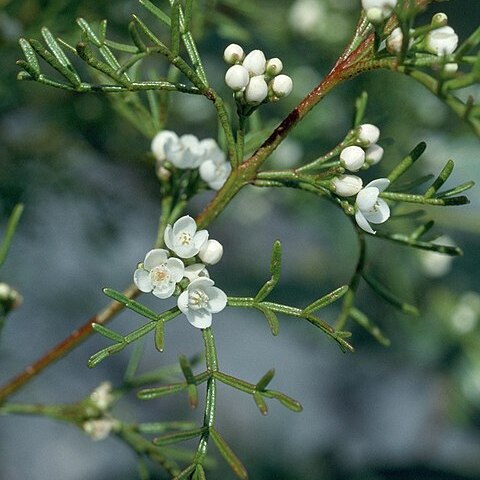A low shrub. It can grow to 1 m tall. The leaves are opposite and have leaflets along the stalk including one at the end. The leaflets are in 1-4 pairs. They are narrow. They are 1.4 cm long by 0.2 cm wide. The flowers can occur singly or in groups of 2 or 3. They are white or pale pink. The fruit is dry and made up of 4 sections each with 2 valves. They are about 3 mm long.

